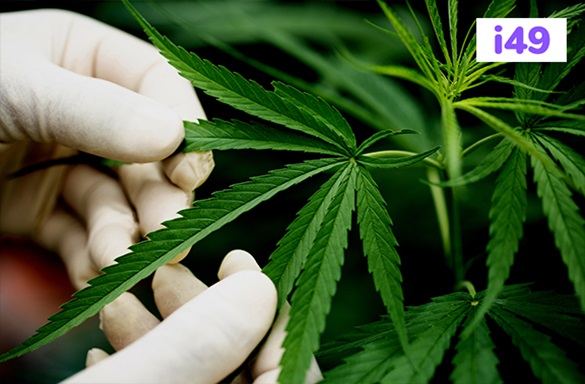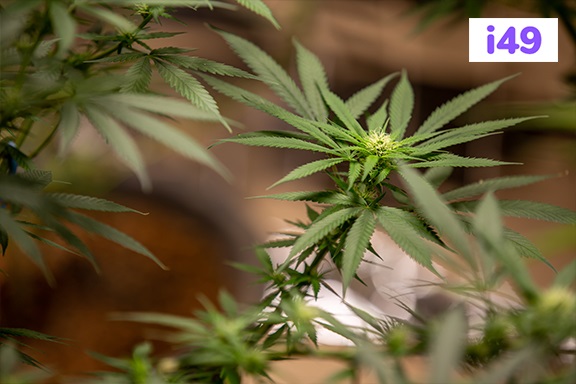Hey, there, cannabis grower! How is it going? Or shall I say, how is it growing?
I think cannabis growing is an adventure. It’s like going on a trek, where the beauty of the journey takes over after a while, and you simply enjoy the journey rather than worrying about the summit. In any case, a well-taken journey will ensure you reach the summit at the end. Meaning, you will produce the most robust buds rich in trichomes and enjoy the most amazing high.
You must know that growing cannabis needs an understanding of specific tactics and techniques to grow a healthy harvest. However, you need to have a thorough understanding of controlling humidity levels when growing indoors, along with appropriate temperature and lighting.
These factors play an important role in maximizing yield and minimizing the threat from pests and diseases. Though most newbies handle the growing room temperature well and understand how to provide the best air circulation, I often receive questions regarding maintaining the ideal relative humidity in the indoor growing space.
Many growers also do not pay attention to the humidity factor until their plants get infested with pests like powdery mildew or their buds start rotting. Therefore, let’s begin talking about this super important factor, relative humidity, without further ado.
Relative Humidity: What Is It?
The percentage of moisture in the air in opposition to the amount of moisture the air can hold is relative humidity. Temperature increase in the grow room makes the relative humidity decrease and vice versa.
If you are curious about how that affects your marijuana babies, you should remember that they respire carbon dioxide from the ambient air through their leaves. They also lose some water from their leaves during this process.
How Humidity Affects Your Cannabis Plant Growth?

When your marijuana babies respire in dry air, they lose more water, and this process results in the reduced moisture level of the plant. Low humidity or too dry an environment means that your plant would not recover the moisture from the soil.
This leads the marijuana babies to close their leave pores to minimize water loss. Though it is effective in receiving co2 in lesser amounts from the environment, the cells within the plants start dying.
If you are thinking that only by watering more can the plants sustain in dry conditions, I am sorry to say; it doesn’t work that way. Overwatering would lead your plants to suffocate and might get root rot.
High levels of humidity increase moisture build-up in the plant’s foliage. Increase the risk of bud rot and other diseases.
Your cannabis plants would flourish with the right humidity level in your growth room. They grow quickly as their pores are open for optimum co2 respiration.
Below is the optimum relative humidity for each stage of growth of the cannabis plant.
- Clones or Seedling : 60-80% RH
- Vegetation Phase : 50-60% RH
- Flowering Phase : 40-55% RH
You should ensure that the RH decreases steadily during each phase.
Ways to Control Humidity In Cannabis Grow Room

Insulate And Seal Your Grow Room
To successfully grow your marijuana plants indoors, ensure that the rooms are properly insulated and sealed. Even if you stay in an area where outdoor humidity is not that high, you have to make sure that the outside climatic factors like wind, humidity, sunlight do not influence the growth of your babies.
Control Grow Room Temperature
Outdoor growers who grow in a suitable climate do not need to worry much about the weather. However, the weather can impact their cultivation if there is any sudden spell of unseasonable climate.
For growers who cultivate indoors, lighting is important. Powerful lights might be tempting to use, but they cause a spike in the growing room temperature. Many purchase air conditioning units that are not adequate for the grow room, and too small or too large an air conditioning system makes the temperature fluctuate. I
It is important to keep your room temperature steady to ensure optimum growth of the plants, and failing to do so might make the plants suffer.
Air Movement
Humid air is lighter than the surrounding air, and thus it rises towards the grow room ceiling, while CO2 stays near the floor. As a result, the absence of proper air circulation in the room is detrimental to your plant’s growth. Excellent air circulation is needed to enable proper respiration for the plants.
You may think that wall fans would be sufficient in circulating the air, but that is not true. These fans do not provide air circulation but reduce the room’s temperature. Proper airflow must be allowed from the bottom, top, and the walls of the growing space for optimum growth.
Floor fans are the best for this purpose. They enable the proper balance of the humidity levels and pull air through the canopy of the marijuana plants. These fans also distribute co2 equally and ensure a steady growing room temperature.
Good Drainage
Moving water ensures that the air is shaken and the molecular oxygen gets trapped within it. This is true for flowing water from natural sources. However, stagnant water doesn’t trap molecular oxygen. It is reduced to a point when bacteria form in the water and thrive.
Formation on standing water in the growing room becomes a bacteria breeding ground. Moreover, moisture gets released in the air of your grow room, and the humidity levels increase. Therefore you must ensure proper drainage to prevent any stagnant puddles of water on the growing room floor. You must cover your water reservoir if you are using hydroponics so that any humidity is not added.
Often new growers do not consider the puddle of water forming in the grow room and try to adjust other factors to reduce the relative humidity. This leads to confusion, and ultimately plants bear the brunt of excessive moisture in the air.
Use a Proper Dehumidifier

As the marijuana plants transpire over 75% of the water they absorb, you need to ensure a dehumidifier of a proper size for your plant babies. They will pull out the right amount of moisture from the air. You might need several dehumidifiers if you have a large growing space, and you must ensure the seamless working of those.
You must be thinking that you should use dehumidifiers in such a condition. It is true.
But not just any dehumidifier would do the necessary work. If you use a residential dehumidifier, those won’t be sufficient in handling the relative humidity levels in a cannabis grow room. They are inefficient and use up a lot of energy, and you will see a rise in utility bills. They are not designed to grow marijuana.
A commercial dehumidifier is the perfect fit for your grow room, though it might seem a bit expensive at first. In the long run, they prove to be useful because they ensure proper humidity levels and ultimately result in massive growth. They will also save you a lot of money as they consume less electricity than the residential units.
In The End
In summary, you must ensure that your growing room is properly insulated and sealed for optimum humidity regulation. You should monitor the lighting to ensure a stable range of temperature. You must circulate the air of the grow room well and ensure that no stagnant puddles of water from there. An appropriately sized dehumidifier is necessary.
I also recommend checking the plants at regular intervals and getting a good quality thermometer and hygrometer to maintain the correct conditions for your plants to thrive.
I hope the above guide will be useful for you to maintain the correct relative humidity levels in your grow room. Ensure that you invest in a good quality strain for growing lush, trichome laced buds for a satisfying experience. I enjoy getting my strains from i49, a top online seed bank with the widest range of marijuana strains. The beginners’ range of seeds has the hardiest and forgiving plants that ensure a good harvest.
Grow well and thrive well.
















